Last Sunday we participated in the 4th round of the CEV (Spanish Championship) in Albacete. It was a good weekend for the Kawasaki Palmeto team in which I work, because Kenny Noyes was second in Formula Extreme. He also was the fastest in the Q2 and had the quickest laptime during the race riding in 1:30.305.
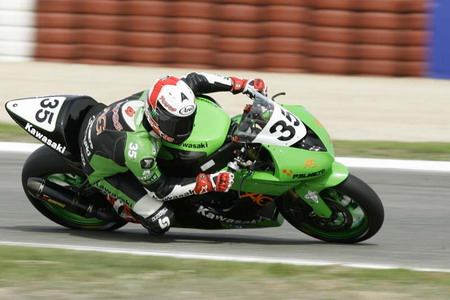
In Albacete the moto2 bikes raced again together with the Extreme bikes. After the trainings the most generalized comment in the paddock was that the Moto2 weren’t able to lap faster than the SuperSport bikes.
Jordi Torres got the SuperSport pole with a super fast time of 1:30.772, whereas the the first Moto2, the BQR of Dani Rivas was 2 tenths slower (1:30.982) and behind him Espargaró made 1:31.251. The AJR ridden by Dani Arcas made 1:33.6, although during the race improved his laptime by 0.5 seconds.
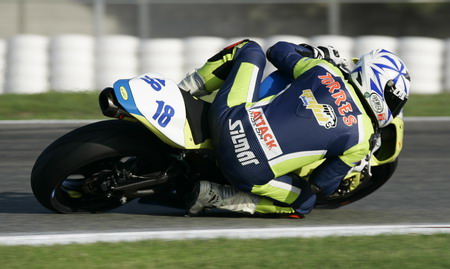
Moto2 bikes are 25 kilos lighter than the SuperSport bikes and they use first level components, it is clear that there is still a lot of work to do. To lap faster than the SuperSport bikes won’t be easy because the SS bikes have a lot of years of evolution. Moto2 bikes still must find their own way regarding weight balance, geometries, etc. I am very curious about what is going to happen when companies with a lot of racing experience (like Aprilia, for example) put their bikes on the track.
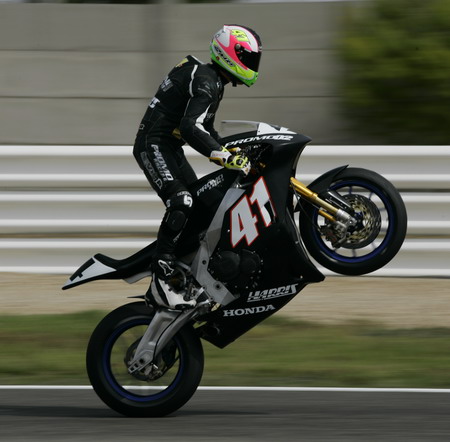
In Albacete we saw the Promoracing bike ridden by Aleix Espargaró (now confirmed Ducati Pramac MotoGP rider for 2010), already with a Honda CBR 600 engine (previous bike had a R6 engine). The new bike is very similar to the previous one, although Harris people had to build a completely new chassis to accomodate the Honda engine. The new bike also had a new fueltank and it uses presurized top notch Öhlins suspensions.
Just a note, you know that during last years the trend is to work with “tuned flex” chassis to allow them to absorb part of the energy that suspensions can not absorb when the bikes are fully leaned. Take a look at the Espargaró Moto2, and the extremely thin section of the swingarm..
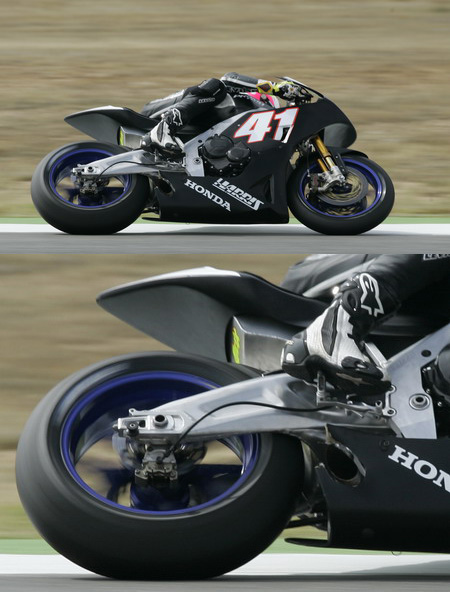
Regarding the BQR bikes, we saw 2 units riding in Albacete, one ridden by Dani Rivas (it’s regular rider) and the other one ridden by Shuhei Aoyama. In some details it was possible to see that Dani’s bike was a little bit more evolutionated than Aoyama’s. They used a new bodywork, if you look at the nose (just under the GALFER text), you can see a cutout that was not in the previous bodywork. They probably made it to improve the air flow going to the airbox, or maybe to add in that cut an intake conduit that is not ready yet. Originally the bikes were designed with the intake conduits going laterally into the airbox, through the chassis (similarly to the MotoGP Hondas), but a change in Moto2 technical rules saying that it is necessary to keep the original CBR airbox has forced BQR people to find a new way to introduce the air in the airbox. Right now it seems that they are doing it under the triple clamp. In Aoyama’s chassis you still can see the chassis cutouts for the air intakes, whereas Dani’s chassis doesn’t have those cutouts anymore.
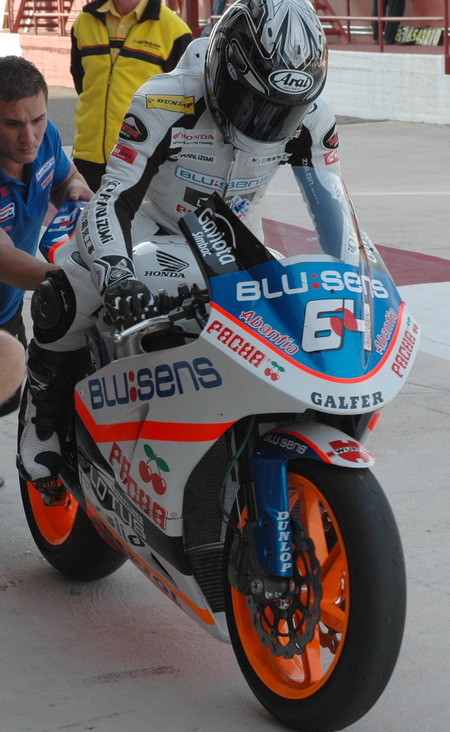
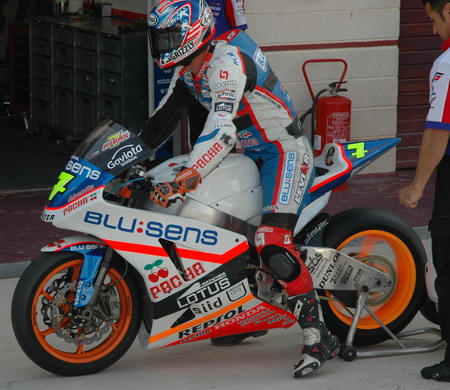
Chain tensioners and fueltank were also different in both bikes.
Josep Pujol provided me all action photos, you can see much more photos of that weekend in his Flickr page. I didn’t have time to take photos, but I gave my camera to a friend who took some photos in the BQR and Promoracing boxes. I uploaded those photos to the Bottpower Flickr page.
I just made one photo during the weekend, it was Sunday afternoon and we were packing when I saw several members of the BQR team looking at the LaGlisse Moto2 bike (still with Yamaha engine, it was on the box but it didn’t ride), I found it funny, in the races everybody tries to be on the ball of what the rest is doing.. 🙂
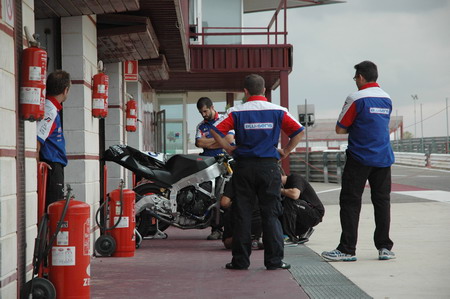
Ah! I also had opportunity to watch another Moto2 prototype, from the Hune-TMM team of Carlos Maestro, this prototype has been made in collaboration with the Carlos III University in Madrid. The bike has been made using a Yamaha engine, the chassis is a steel trellis bolted to 2 CNC machined aluminum plates in the swingarm pivot area. By the moment I don’t have photos of this bike.
I am surprised that Moto2 prototypes aren’t faster than Supersports because of the weight and slicks. Are they running on stock CBR engines or with Supersports parts in the engine? Are the tires already Moto2 spec Dunlops? Do the bikes look like the drivers can’t get to the limit?
Hi ut, I think the bikes have SS spec engines and Moto2 spec Dunlops.
I think the riders can arrive to the bike limits, but at this moment it seems that the SS limits are far away than Moto2 limitis… even with less weight and better components.